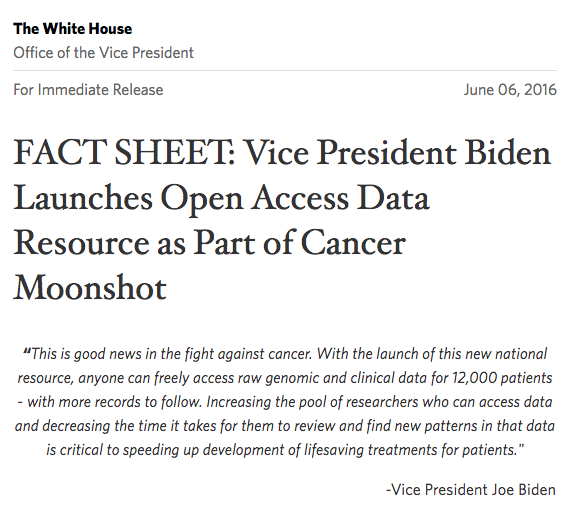By John Borghi and Daniella Lowenberg
Because of the tools and services we offer, we here at UC3 spend a lot of time talking about how to make data open. But, for open access week, we’d also like to take some time to talk about why. We think this is best illustrated by comments we collected from the community as well as excerpts from publications and public statements:
Open Data in order to have a broader reach with your work
Dr. Jonathan Eisen (UC Davis): “Starting in about 2009, we started publishing “data papers” to go with our open release of genome sequence data. These papers just report on the generation of the genome data and not analysis of the data. And these data reports have led to a large number of citations for me and my collaborators. For example for the Genomic Encyclopedia of Bacteria and Archaea project, we have published > 100 genome sequence data reports and these have in total been cited at least a few thousand times.
It is a win win approach for us. We publish papers detailing the generation of open data, which in turn I believe makes people feel more comfortable using that data, when they use the data they cite the papers, and we get more academic and general credit for the data. In the past, when people used our data in Genbank when there was no specific paper on just that data set, people were less likely to cite it.”
Open Data in order to find cures

In order to “measure progress by improving patient outcomes, not just publications”, open data is a central feature of the Cancer Moonshot Initiative led by former vice president Joe Biden. Similarly, efforts like clinicaltrials.gov and healthdata.gov aim to expose high value data in the hopes of facilitating better health outcomes.
Open Data in order to aid with the peer review process
Meghan Byrne (Senior Editor, PLOS ONE): “In our experience at PLOS ONE, making data openly available to the reviewers can help move the review process forward more quickly, particularly if the data are clearly reported, with the relevant metadata. In fact, we find that an increasing number of Academic Editors and reviewers are requesting to see the data, so having them ready at the time of submission can help reduce the time to publication. Once the paper is published, making the data publicly available increases the overall impact of the work.”
Open Data in order to advance scientific discovery

Open data from the Compact Muon Solenoid (CMS) at CERN’s Large Hadron Collider was recently used by researchers outside the organization to confirm a hypothesis about quantum chromodynamics (read more here). Though this is only one example, it is demonstrative of the immense potential for open data to facilitate discovery as new methods and analyses are applied to old data.
Open Data in order to extend the value of research investment
Carly Strasser (Moore Foundation): “We want research that we fund to be widely available. Free and open access to the research outputs that we fund is critical for ensuring maximum impact.”
